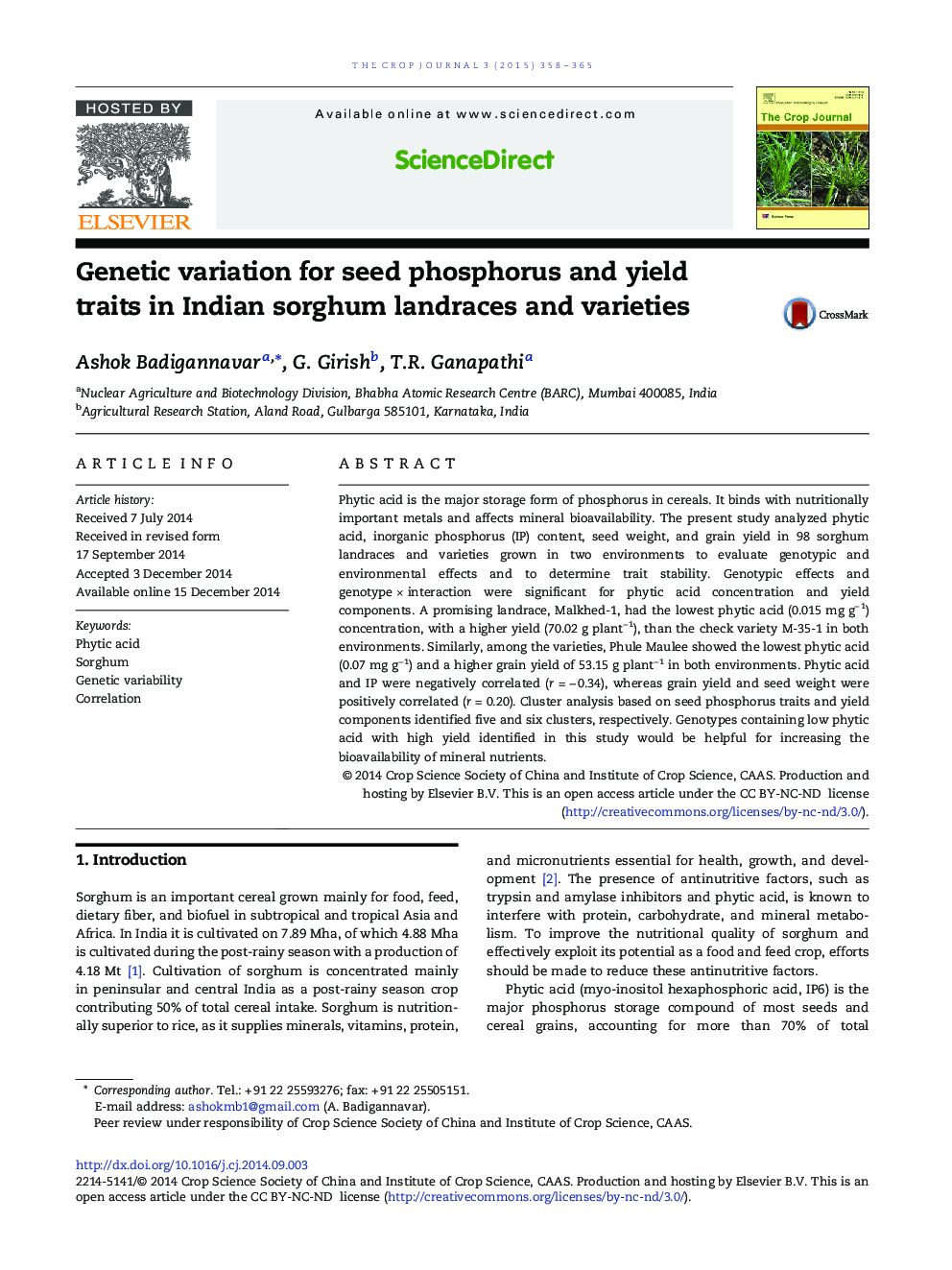| Article ID | Journal | Published Year | Pages | File Type |
|---|---|---|---|---|
| 2079463 | The Crop Journal | 2015 | 8 Pages |
Phytic acid is the major storage form of phosphorus in cereals. It binds with nutritionally important metals and affects mineral bioavailability. The present study analyzed phytic acid, inorganic phosphorus (IP) content, seed weight, and grain yield in 98 sorghum landraces and varieties grown in two environments to evaluate genotypic and environmental effects and to determine trait stability. Genotypic effects and genotype × interaction were significant for phytic acid concentration and yield components. A promising landrace, Malkhed-1, had the lowest phytic acid (0.015 mg g− 1) concentration, with a higher yield (70.02 g plant− 1), than the check variety M-35-1 in both environments. Similarly, among the varieties, Phule Maulee showed the lowest phytic acid (0.07 mg g− 1) and a higher grain yield of 53.15 g plant− 1 in both environments. Phytic acid and IP were negatively correlated (r = − 0.34), whereas grain yield and seed weight were positively correlated (r = 0.20). Cluster analysis based on seed phosphorus traits and yield components identified five and six clusters, respectively. Genotypes containing low phytic acid with high yield identified in this study would be helpful for increasing the bioavailability of mineral nutrients.
